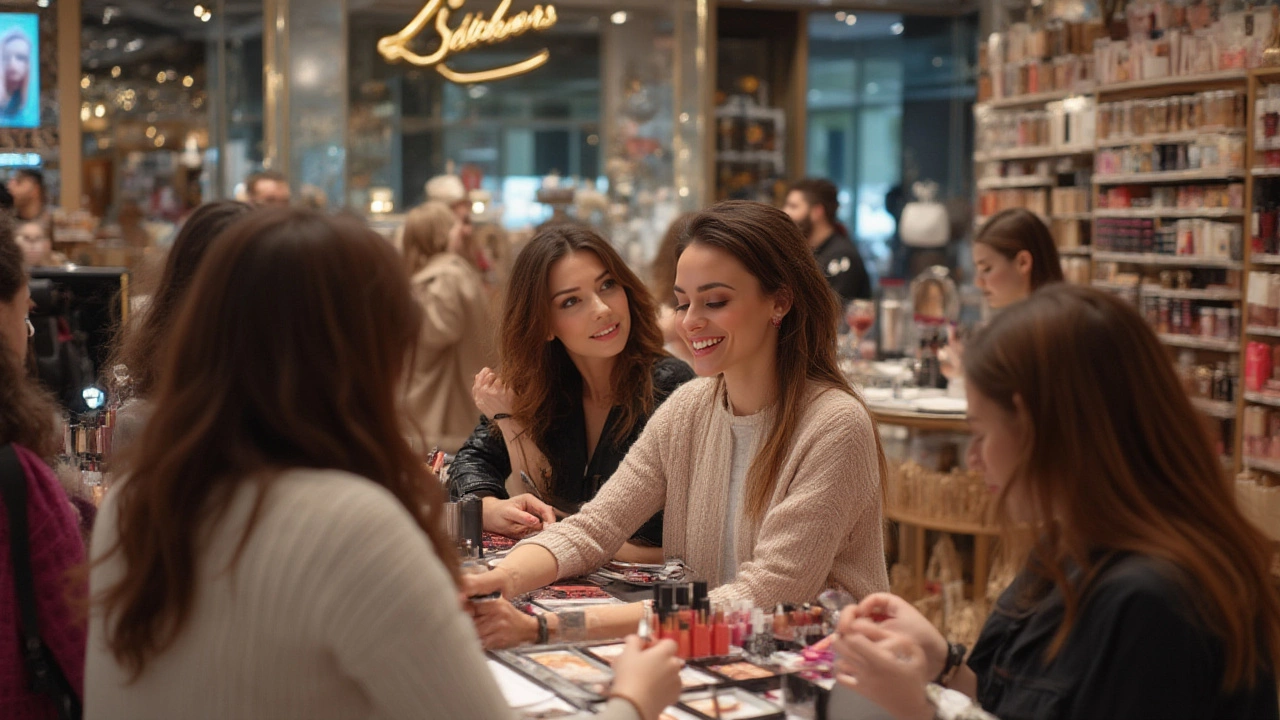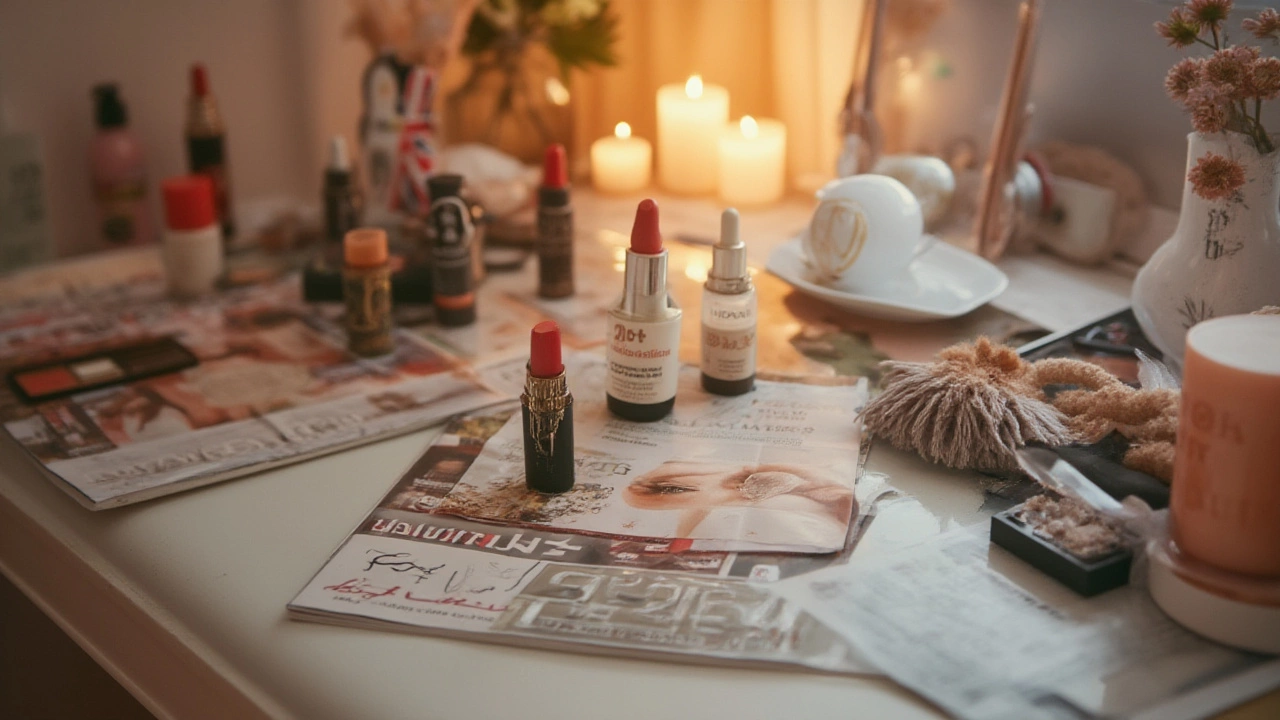Top-Selling Makeup Brands: Which One Dominates the Beauty Market?
 Jul, 27 2025
Jul, 27 2025
Walk through Wellington's Lambton Quay or scroll for five minutes on Instagram, and it hits you fast—makeup is more than a trend; it’s a global obsession. Ever wondered who’s cashing in the most from this colorful craze? The numbers will spin your head: the beauty industry rakes in more than $500 billion a year worldwide, with makeup products like foundation, mascara, and lipstick grabbing the biggest slices of the pie. And with all this buzz, one burning question sticks—top-selling makeup brands: who’s king (or queen)?
The Champions of Sales: Who Reigns in Makeup?
If you’re hoping for a hidden indie gem here, I’m going to burst your bubble. The brand that wears the sales crown, year after year, is L’Oréal. This French powerhouse isn’t just popular in Europe or down here in New Zealand—its reach is truly global, with more than 150 countries stocking its products. The 2024 financial reports showed L’Oréal Group pulling in over $40 billion USD just from beauty and personal care last year. Yes, that’s with nine zeros. But L’Oréal is more than a one-label show. Under them, you’ll find familiar names like Maybelline (the world’s #1 mass-market makeup brand), NYX, Urban Decay, and luxury gems like Lancôme and Yves Saint Laurent Beauty. Their strategy is simple: be everywhere, for everyone, in every price range.
Don't be surprised to see some other titans on the sales leaderboard. Estée Lauder Companies is right on L’Oréal’s heels, generating over $18 billion USD annually. They own MAC, Bobbi Brown, and smash-hit skincare brands—but when it comes to color cosmetics, MAC’s iconic black lipsticks and concealers are at the center of their engine. Coty and Shiseido also rack up billions with their own mix of designer, drugstore, and celebrity lines. Surprisingly, even as influencer brands like Fenty Beauty create stampedes on launch day, the legacy titans still bag the biggest totals in annual reports.
Let’s see just how the top five stack up for 2024 in cold, hard numbers:
| Brand/Group | Annual Revenue ($USD, 2024) | Flagship Makeup Labels |
|---|---|---|
| L'Oréal | $40 billion | Maybelline, NYX, Lancôme |
| Estée Lauder Companies | $18 billion | MAC, Bobbi Brown, Estée Lauder |
| Coty Inc. | $10.6 billion | CoverGirl, Rimmel, Kylie Cosmetics |
| Shiseido | $8.7 billion | Shiseido, NARS, BareMinerals |
| Revlon | $2.1 billion | Revlon |
What keeps these brands on top? Their secret sauce is diversity—of products, price points, and places available. Maybelline is on drugstore shelves from Spain to South Africa. Meanwhile, MAC runs standalone boutiques and counters in department stores. Even with constant pressure from viral launches and TikTok trends, these behemoths invest millions in R&D to keep their formulas feeling fresh. They’ve also nailed the art of massive advertising—think celebrity ambassadors, influencer deals, and endless billboards. No wonder they’re impossible to ignore.
Why Do Certain Makeup Brands Sell So Much?
It’s tempting to think the best makeup just sells itself. But the real magic goes way deeper than having a killer lipstick shade. Let's peek into why these brands grab the loudest chunk of our wallets. First, there’s trust. Four out of five shoppers say they’ll stick to what’s familiar, and brands like L’Oréal or Maybelline have been household names since well before social media existed. Next up: affordability. For every $65 luxury foundation, mass brands deliver quality at half (or even a quarter) of the price, luring in millions more customers globally. Plus, distribution is everything—if you can pick it up at your nearest supermarket, pharmacy, or online in two clicks, you’re going to buy more.
Then there’s shade range and innovation. Remember when foundation only came in seven beige tones? Not anymore. The explosion of Fenty Beauty’s 50 shades in 2017 forced all the giants to up their games, and now you’ll find dozens of options for every skin tone from most leading brands. Many brands toss “cruelty free” or “vegan” on their boxes too, keeping up with growing customer demand for ethical choices. Packaging plays a part; people love snapping cute compacts and palettes for their Insta-feed. Smart brands capitalize on seasonal collections—think Halloween lip kits or cherry blossom blushes—giving us a new excuse to add to our stash.
Oh, and brand ambassadors matter. When Taylor Swift’s iconic red lip turns out to be Maybelline’s “Pioneer,” or Zendaya posts her go-to Lancôme mascara on TikTok, sales spike. Collaborations with influencers or movie franchises (hello, Barbie!) give numbers another sharp bump.
Want a tip for what’s really moving off the shelves in New Zealand? Check out your local pharmacy. Number one sellers like Maybelline Sky High Mascara and L’Oréal True Match Foundation barely make it to the end of the week before they’re restocked. It’s the same story for online stores—these classics top bestsellers lists on major platforms like MECCA and Sephora NZ, month after month.

Shifting Trends: How Social Media and Consumers Redefine Bestsellers
Eighteen months ago, all the talk on beauty forums and TikTok was about viral indie lines—remember the mad crush for Rare Beauty and E.l.f. Cosmetics? That’s no happy accident. Social media isn’t just helping us discover new brands; it’s making and breaking makeup stars almost overnight. Products like E.l.f.’s Halo Glow Filter or Fenty’s Gloss Bomb saw huge surges because millions watched them in action and wanted that exact result in their own mirror. Some TikTok-favorite brands like Charlotte Tilbury’s Pillow Talk lipstick now outsell classic colors by the millions. But remember, while a viral product might command waitlists for weeks, high volume and lasting sales often circle back to the global brands with reliable logistics and marketing.
Another new twist? Shoppers are far more ingredient-savvy than even five years ago. Today’s bestsellers often run free of parabens, fragrance, or animal-derived ingredients, and that’s thanks to young beauty lovers researching every label. Even in drugstores, new sub-brands—like Maybelline’s Green Edition—highlight clean, vegan, or sustainable practices, catching the eco-minded crowd who used to steer clear.
Here’s something else that’s wild: the comeback of classic cult products. There’s this cycle where TikTok or old-school beauty gurus suddenly rediscover a gem that’s been sitting quietly for decades—think NARS Orgasm blush or MAC Spice lip pencil. Sales explode with a whole new generation. If you want to predict what’s next, pay close attention to which classic products influencers are “re-hauling.” They usually fly off shelves next week.
Wondering how to spot products getting traction? Watch for hashtags—#dupe for example means someone found a cheaper imitation of a cult product. When a drugstore brand launches a mascara that beauty bloggers say rivals a $60 luxury buy, it’s almost guaranteed to hit bestseller lists.
Tips for Buying from the Bestselling Makeup Brands
Chasing the bestsellers isn’t about emptying your wallet on every hyped-up product. The best trick? Figure out what works for you, not just what’s trending online. For foundations, always match in daylight if possible, and don’t be afraid to grab samples—even the biggest brands usually offer tiny pots or testers at counters and pharmacies. For eye makeup, popular doesn’t mean perfect for everyone: those Maybelline and Lancôme mascaras are famous for a reason, but someone with sensitive eyes might be better off with a hypoallergenic formula from a specialist label.
Lipsticks are a world of their own. MAC Ruby Woo and Maybelline SuperStay have universal appeal, but everyone’s skin tone plays with reds and pinks differently. Know your undertone—cool, warm, or neutral—and swatch before buying. Tips from pros: if you love a viral shade but feel unsure, layer it lightly over lip balm to see if it works with your natural color first.
Value is another smart way to invest. Every year, the big brands release “vaults” or limited-edition kits with several products for less than the cost of buying the items separately. Look out for gift-with-purchase offers around big events (Mother’s Day and Christmas deals are especially generous in New Zealand).
And if you’re keen on eco-friendly credentials, don’t just trust the front of the box. Flip to the ingredients and look up symbols—Leaping Bunny for cruelty-free, for example. Many of the top-sellers now have vegan or clean lines, and some are pushing refill options to cut packaging waste.
Finally, don’t underestimate the power of reviews—real user photos and stories are worth more than the fanciest campaign. If a $13 mascara ranks above a $50 one on several sites’ bestseller charts, there’s probably a good reason. Just double-check that reviewers have similar skin types or concerns to yours, for the best advice.
